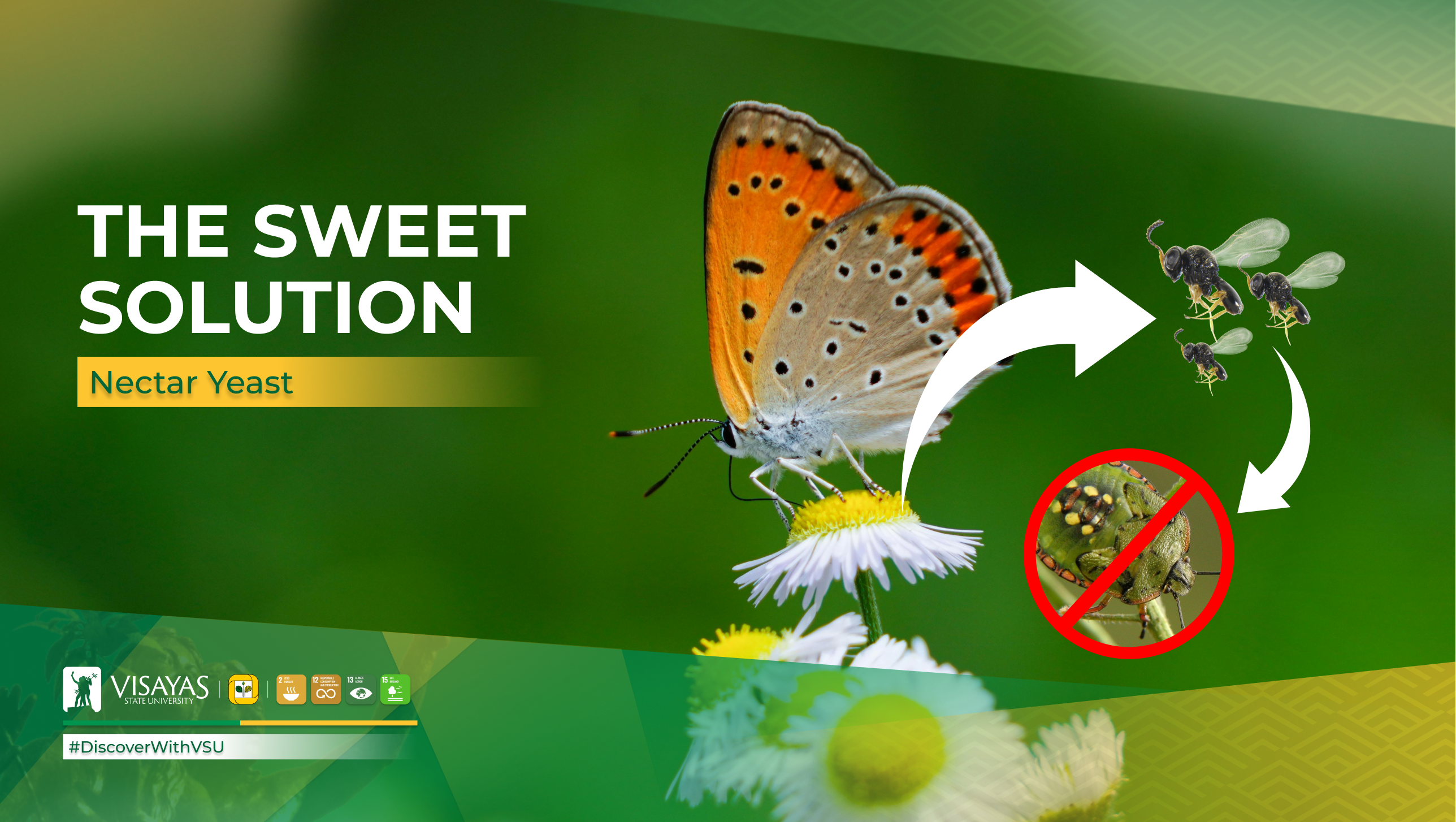#DiscoverWithVSU: How nectar yeasts can help farmers control crop pests
- Details
- Written by Mike Laurence V. Lumen
-
Published: 14 November 2025

When we think of nectar, we imagine a sweet treat for bees and butterflies. But inside every drop of nectar, there are microbes that can change how insects behave.
A recent international study, authored by Dr. Jay Darryl L. Ermio of the Visayas State University-Department of Pest Management (VSU-DPM) together with other Europe-based researchers, shows how these nectar-dwelling yeasts can help natural enemies of crop pests find their targets.
The study, published in the journal BioControl (Springer Nature), in January 2024, is titled “The indirect effect of nectar-inhabiting yeasts on olfactory responses and longevity of two stink bug egg parasitoids.”
The research focused on two species of tiny parasitic wasps, Trissolcus basalis and Ooencyrtus telenomicida. These wasps are not harmful to people, but they are deadly to the eggs of the southern green stink bug (Nezara viridula), a major pest of vegetables and other crops worldwide.
The wasps search for food in flowers, where nectar is often colonized by yeasts. Researchers wanted to know if the presence of yeast makes nectar more attractive or useful to these pest-fighting wasps.
The study found that when nectar was fermented by a specialist yeast called Metschnikowia gruessii, the wasps were strongly drawn to it. In contrast, another yeast species, Metschnikowia reukaufii, did not influence their choices. Interestingly, feeding on individual yeast-fermented nectar did not shorten the lifespan of the wasps. They lived just as long as those fed with unfermented nectar, sometimes surviving for more than 90 days.
Using advanced chemical analysis, the scientists discovered that each type of yeast changed the scent profile of nectar in different ways. These odor cues appear to help the wasps find food, which could indirectly make them more effective in locating stink bug eggs in the field.
For farmers, these findings open up new possibilities in pest control, specifically in the context of conservation biological control. Instead of depending mainly on chemical sprays, which can be costly and harmful to the environment, strategies can be designed to attract and support beneficial insects. Researchers may be able to design floral strips or field margins that can host nectar microbes like yeasts which would naturally boost the population and effectiveness of parasitoid wasps.
This approach supports a healthier farming system where pests are managed by natural enemies and will reduce crop losses and pesticide dependence. For communities that rely heavily on vegetable and crop production, it means more stable harvests and safer food but without compromising the health of the environment.
Through Dr. Ermio’s involvement in this research, VSU is once again recognized as part of cutting-edge international research. The study connects the local expertise of VSU in pest management with advanced laboratories in Europe and demonstrates how Filipino scientists are actively contributing to solutions for global agricultural challenges.
By looking at something as small as nectar microbes, this research opens a new window into smarter, eco-friendly pest control strategies that can benefit farmers in Leyte, across the Philippines, and beyond.
This article is aligned with the Sustainable Development Goal (SDG) 2: Zero Hunger; SDG 12: Responsible Consumption and Production; SDG 13: Climate Action, and; SDG 15: Life on Land.

